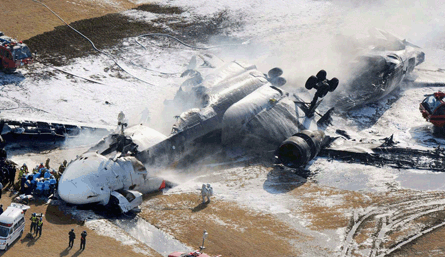Global airline safety has stopped improving for the first time in aviation's history. The accident figures for the first half of 2009 serve to confirm a trend that Flight International had previously flagged up. Meanwhile, unless there is a dramatic improvement in performance during the remainder of this year and the whole of 2010, the world will have witnessed the first decade since the Wright Brothers when safety standards remained static.
Some would say safety has stopped improving because of the law of diminishing returns. Is commercial airline flying as safe as it can get? The short answer is no. When the investigators have completed their analyses of the accidents so far this year, they will find in all cases - with the possible exception of the Hudson River ditching - opportunities to prevent them were missed.
 |
|---|
© Sipa Press/Rex FeaturesLoss of control was a problem for the FedEx Boeing MD-11 pilots |
It is not possible to come up with a single reason why improvement has stalled, but there are several candidates. Loss of control, already a killer problem that has been rising in frequency in recent years, definitely occurred in the FedEx Boeing MD-11 accident at Tokyo and the Colgan Air Q400 at Buffalo, but it may also turn out to be true of others, like the Yemenia Airbus A310 and even the Air France A330 over the South Atlantic.
In all the loss of control accidents over the last 20 years the aircraft could have been controlled. What led up to it varies from crew distraction followed by disorientation, to failure to anticipate and manage the power and control force vectors during a go-around. Several involve failure to manage a stall. All of them demonstrate flaws in pilot recurrent training. To describe it as pilot error is an oversimplification, obscuring the fact that the pilot was not trained to deal with the situation.
The Turkish Airlines pilots failed to notice the uncommanded retarding of their Boeing 737-800's throttles, and the associated speed loss that caused it to stall on approach, as a result of two things: conditioned trust in the aircraft's normally reliable automation, and failure of their recurrent training to reinforce basic practices like monitoring airspeed on approach.
Last year the Flight Safety Foundation said if safety is to improve beyond what we see now, airlines have to go "beyond compliance" - to do more than just meet regulatory minimum standards. The first point at which that message needs to be applied is in pilot training, because the pilots are an airline's last opportunity to contain errors or omissions made in the system upstream of them. Although it is tempting in these straitened times to cut investment in training, that would be the ultimate false economy.
Source: Flight International






















